第83章 IV(2)
Shortly afterwards Mr. Scott found some consolation in building the St.
Pancras Hotel in a style of his own.
And now another and yet more satisfactory task was his. "My idea in designing the Memorial," he wrote, "was to erect a kind of ciborium to protect a statue of the Prince; and its special characteristic was that the ciborium was designed in some degree on the principles of the ancient shrines. These shrines were models of imaginary buildings, such as had never in reality been erected; and my idea was to realise one of these imaginary structures with its precious materials, its inlaying, its enamels, etc. etc." His idea was particularly appropriate since it chanced that a similar conception, though in the reverse order of magnitude, had occurred to the Prince himself, who had designed and executed several silver cruet-stands upon the same model. At the Queen's request a site was chosen in Kensington Gardens as near as possible to that of the Great Exhibition; and in May, 1864, the first sod was turned. The work was long, complicated, and difficult; a great number of workmen were employed, besides several subsidiary sculptors and metal--workers under Mr. Scott's direction, while at every stage sketches and models were submitted to Her Majesty, who criticised all the details with minute care, and constantly suggested improvements. The frieze, which encircled the base of the monument, was in itself a very serious piece of work. "This," said Mr. Scott, "taken as a whole, is perhaps one of the most laborious works of sculpture ever undertaken, consisting, as it does, of a continuous range of figure-sculpture of the most elaborate description, in the highest alto-relievo of life-size, of more than 200 feet in length, containing about 170 figures, and executed in the hardest marble which could be procured." After three years of toil the memorial was still far from completion, and Mr. Scott thought it advisable to give a dinner to the workmen, "as a substantial recognition of his appreciation of their skill and energy." "Two long tables," we are told, "constructed of scaffold planks, were arranged in the workshops, and covered with newspapers, for want of table-cloths. Upwards of eighty men sat down.
Beef and mutton, plum pudding and cheese were supplied in abundance, and each man who desired it had three pints of beer, gingerbeer and lemonade being provided for the teetotalers, who formed a very considerable proportion...
Several toasts were given and many of the workmen spoke, almost all of them commencing by "Thanking God that they enjoyed good health;" some alluded to the temperance that prevailed amongst them, others observed how little swearing was ever heard, whilst all said how pleased and proud they were to be engaged on so great a work."
Gradually the edifice approached completion. The one hundred and seventieth life-size figure in the frieze was chiselled, the granite pillars arose, the mosaics were inserted in the allegorical pediments, the four colossal statues representing the greater Christian virtues, the four other colossal statues representing the greater moral virtues, were hoisted into their positions, the eight bronzes representing the greater sciences--Astronomy, Chemistry, Geology, Geometry, Rhetoric, Medicine, Philosophy, and Physiology--were fixed on their glittering pinnacles, high in air. The statue of Physiology was particularly admired. "On her left arm," the official description informs us, "she bears a new-born infant, as a representation of the development of the highest and most perfect of physiological forms; her hand points towards a microscope, the instrument which lends its assistance for the investigation of the minuter forms of animal and vegetable organisms." At last the gilded cross crowned the dwindling galaxies of superimposed angels, the four continents in white marble stood at the four corners of the base, and, seven years after its inception, in July, 1872, the monument was thrown open to the public.
But four more years were to elapse before the central figure was ready to be placed under its starry canopy. It was designed by Mr. Foley, though in one particular the sculptor's freedom was restricted by Mr. Scott. "I have chosen the sitting posture," Mr. Scott said, "as best conveying the idea of dignity befitting a royal personage." Mr. Foley ably carried out the conception of his principal. "In the attitude and expression," he said, "the aim has been, with the individuality of portraiture, to embody rank, character, and enlightenment, and to convey a sense of that responsive intelligence indicating an active, rather than a passive, interest in those pursuits of civilisation illustrated in the surrounding figures, groups, and relievos...
To identify the figure with one of the most memorable undertakings of the public life of the Prince--the International Exhibition of 1851--a catalogue of the works collected in that first gathering of the industry of all nations, is placed in the right hand." The statue was of bronze gilt and weighed nearly ten tons. It was rightly supposed that the simple word "Albert," cast on the base, would be a sufficient means of identification.